
Anacharis
"A genus of plants of the natural order Hydrocharideae, of which a species A. Canadensis has recently…

Andromeda
"A genus of Andromeda polifolia of plants of the natural order Ericaceae, distinguished by a 5-valve…
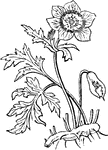
Anemone Coronaria
"A genus of plants of the natural order Ranunculaceae, having an involucre of three divided leaves,…

Angelica
"A genus of plants of the natural order Umbelliferae, by some botanists divided into two: A., and Archangelica.…
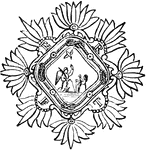
Order of the Annunciation
"The religious Order of the Heavenly Annunciation, or of the Nuns of the Annunciation of Mary, was instituted…

Arachis
"A genus of plants of the natural order Leguminosae, sub-order Papilionaceae, natives of the warm parts…

Arbor Vitae
"A genus of plants of the natural order Coniferae, allied to the cypress, and consisting of evergreen…

Aristolochia
"A genus of plants of the natural order Aristolochiaceae. This order, which is dicotyledonous or exogenous,…
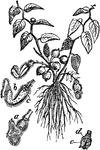
Aristolochia
"A genus of plants of the natural order Aristolochiaceae. This order, which is dicotyledonous or exogenous,…

Arnica Montana
"A genus of plants belonging to the natural order compositae, sub-order Corymbiferae. The flowers of…

Arracacha
"A plant of the natural order Umbelliefrae, a native of the elevated table-lands in the neighborhood…
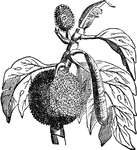
Bread-fruit
"Artocarpaceae, a natural order of Dicotyledonous plants, of which the Bread-fruit is the type; very…
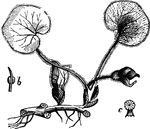
Asarabacca
"A plant of the natural order Aristolochiaceae, a native of Europe, growing in woods; rare, and perhaps…
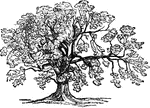
Common Ash
"A genus of trees belonging to the natural order Oleaceae, and distinguished by very imperfect flowers,…

Astragalus
"A genus of plans of the natural order Leguminosae, sub-order Papilionaceae. The pod is more or less…
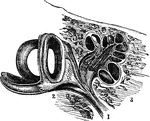
Auditory Nerve
"By anatomists, the auditory nerve is associated with the facial, and is the seventh in order of origin…
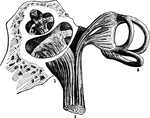
Auditory Nerve
"By anatomists, the auditory nerve is associated with the facial, and is the seventh in order of origin…

Aviz
"An order of knighthood in Portugal, instituted by Sancho, the first king of Portugal, in imitation…

Bacchus
"The god of wine, was the son of Zeus and Semele, the daughter of Cadmus. Before his birth, Semele fell…

Balm
"An erect, branching perennial, herbaceous plant of the natural order Labiatae, a native of the south…

Basil
"A genus of plants of the natural order Labiatae. The species are all natives of the tropics, or of…

Rock-Rose
"A genus of exogenous plants, which gives its name to the natural order Cistaceae; an order allied to…
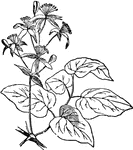
Clematis
"A genus of plants of the natural order ranuculaceae having four colored sepals, no corolla, and fruit…
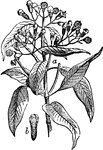
Cloves
"Cloves are the flower-buds of the Clove-tree. The genus to which this tree belongs is of the natural…
Colchicum
"A genus of plants of the natural order Melanthaceae. The species, which are few in number, are stemless,…
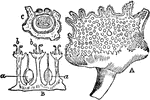
Contrayerva
"A medicine once in much repute against low fevers, and as a mild stimulant and diaphoretic, and still…
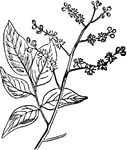
Copaiva Tree
"A valuable medicinal substance, consisting chiefly of a resin (Resin of Copaiva) and a volatile oil…
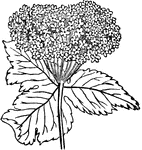
Cow Parsnip
"A genus of plants of the natural order Umbelliferae, having petals bent in at the middle, and flat…

Cress
"A name given to many plants, of which the foliage has a pungent, mustard-like taste, and is used as…

Crowberry
"A small procumbent shrub, of the natural order Empetraceae, a native of the northern parts of the world,…

Custard Apple
"The name commonly given in the West Indies and other tropical countries to the fruits of certain species…

Daphne Mezereon
"A genus of plants of the natural order Thymeleaceae, having a 4-cleft, funnel-shaped perianth, the…

Day-lily
"A genus of plants of the natural order Liliaceae, having a perianth with bell-shaped limb, and sub-cylindrical…
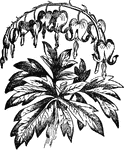
Dielytra
"A genus of plants of the natural order Fumariaceae, in appearance and habit much resembling fumitories…
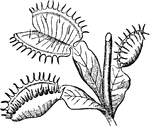
Dionaea
"A very curious and interesting genus of plants of the natural order Droseraceae, having a 5-partite…

Dittany
"A genus of plants of the natural order Rutaceae, having a short 5-partite calx, five some-what unequal…

Dragon Tree
"A tree of the natural order Liliaceae, remarkable for the size which it sometimes attains, rivalling…

Ebony
"A wood remarkable for its hardness, heaviness, and deep black color, is the heart-wood of different…
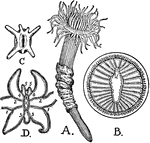
Cerianthus Solitarius
"A, Cerianthus solitarius. B, Transverse section of the stomodaeum, showing the sulculus, sl, and the…
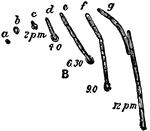
Bacillus Ramosus
"The various phases of germination of spores of Bacillus ramosus, as actually observed in hanging drops…

Bacillus Ramosus
"The various phases of germination of spores of Bacillus ramosus, as actually observed in hanging drops…

Spores
"Various stages in the development of the endogenous spores in a Clostridium — the small letters…
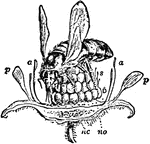
Raspberry Fertilization
"Raspberry (Rubus idaeus, order Rosaceae), being fertilized. A, Flower. p, p, Petals. a, a, Anthers.…

Capsicum
"A genus of annual, subshrubby plants, order Solanaceae, with a wheel-shaped corolla, projecting and…
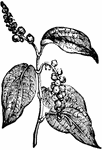
Black Pepper
"A genus of order Piperaceae. The Piper nigrum, which furnishes the black pepper of commerse, is a native…

Ipecacuanha Plant
"The root used in medicine under this name is obtained from Cephaelis Ipecacuanha, A. Rich, a small…

Jasmine
"Botanically Jasminum, a genus of shrubs or climbers constituting the principal part of the natural…

Center of Gravity
"Why does a person carrying a weight upon his back stoop forward? In order to bring the center of gravity…

Center of Gravity
"Why does a person carrying a weight upon his back stoop forward? In order to bring the center of gravity…

Elements of an Architectural Order
A diagram showing the titles for different types of architecture.
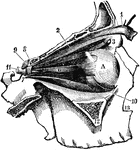
Eye Muscles
"The external bones of the temple are supposed to be removed in order to render visible the muscular…
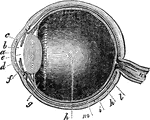
Eye
"Next in order is the aqueous humor, b, e, in the middle of which is the iris, d, c. Behind the pupil…
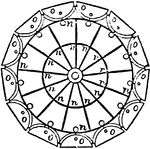
Revolving Light
"In order to produce, on the catoptric system, a fixed light showing all round the circle, a number…

Parabolic Profile
"In order strictly to equalize a fixed light over the whole horizon, which could not possibly be done…

Reflecting Prism
"Fresnel next conceived the admirable improvement of employing the principle of "total" or internal…

Hydraulic Press
"The pump barrel, a, b, is represented as divided lengthwise, in order to show the inside. The piston,…

Water Weighing
"Take a piece of ivory, or any other substance that will sink in water, and weigh it accurately in the…

Camera Obscura
"Camera obscura strictly signifies a darkened chamber, because the room must be darkened, in order to…

